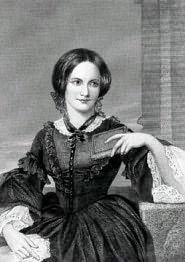Reading Group Guide
1. In Jane Eyre, nothing can better show a man's moral worth than the way in which he treats the women in his life. How is Rochester's character reflected in the way he treats Jane, Adele, Bertha Mason, and Miss Ingram, and in his reported treatment of Celine Varens? How is St. John's character reflected in the way he treats Jane, Miss Oliver, and Diana and Mary? Why does this serve as such a good gauge of a man's morality and worth? What other relationships serve similar functions in the novel?
2. Throughout the novel, questions of identity are raised. From her identity as an orphan and stranger in the hostile environment of Gateshead Hall to that of a ward of the church at Lowood; from her being a possible wife of Rochester, then of St. John, to being the cousin of Diana and Mary, Jane is constantly in transition. Trace these changes in identity and how they affect Jane's view of herself and the world around her. Describe the final discovery of her identity that becomes apparent in the last chapter of the novel and the events that made that discovery possible.
3. Throughout the novel, Charlotte Brontë uses biblical quotes and religious references. From the church-supported school she attended that was run by Mr. Brocklehurst to the offer of marriage she receives from St. John, she is surrounded by aspects of Christianity. How does this influence her throughout her development? How do her views of God and Christianity change from her days as a young girl to the end of the novel? How is religion depicted in the novel, positively or negatively?
4. Many readers of Jane Eyre feel that the story is composed of two distinct parts, different in tone and purpose. Thefirst part (chapters 1-11) concerns her childhood at Gateshead and her life at Lowood; the second part is the remainder of the story. Is creating such a division justified? Is there a genuine difference of tone and purpose between the two sections as they have been described? Some critics and readers have suggested that the first part of Jane Eyre is more arresting because it is more directly autobiographical. Do you find this to be true?
5. Upon publication, great speculation arose concerning the identity of the author of Jane Eyre, known only by the pen name Currer Bell. Questions as to the sex of the author were raised, and many critics said that they believed it to be the work of a man. One critic of her time said, "A book more unfeminine, both in its excellence and defects, it would be hard to find in the annals of female authorship. Throughout there is masculine power, breadth and shrewdness, combined with masculine hardness, coarseness, and freedom of expression." Another critic of the day, Elizabeth Rigby, said that if it was the product of a female pen, then it was the writing of a woman "unsexed." Why was there such importance placed on the sex of the author and why was it questioned so readily? What does it mean that people believed it to be the product of a man rather than of a woman?
6. Scenes of madness and insanity are among the most important plot devices in Jane Eyre. From the vision Jane sees when locked in the bedroom at Gateshead to her hearing the "goblin laughter" she attributes to Grace Poole, to the insanity and wretchedness of Bertha Mason, madness is of central importance to the plot and direction of the story. Give examples of madness in the text, and show how they affect the reader's understanding of the character experiencing the madness and how these examples affect the reader's understanding of the characters witnessing it.
7. There is probably no single line in the whole of Jane Eyre that has, in itself, attracted as much critical attention as the first line of the last chapter: "Reader, I married him." Why is the phrasing of this line so important? How would the sense be different-for the sentence and for the novel as a whole-if the line read, "Reader, we were married"?














